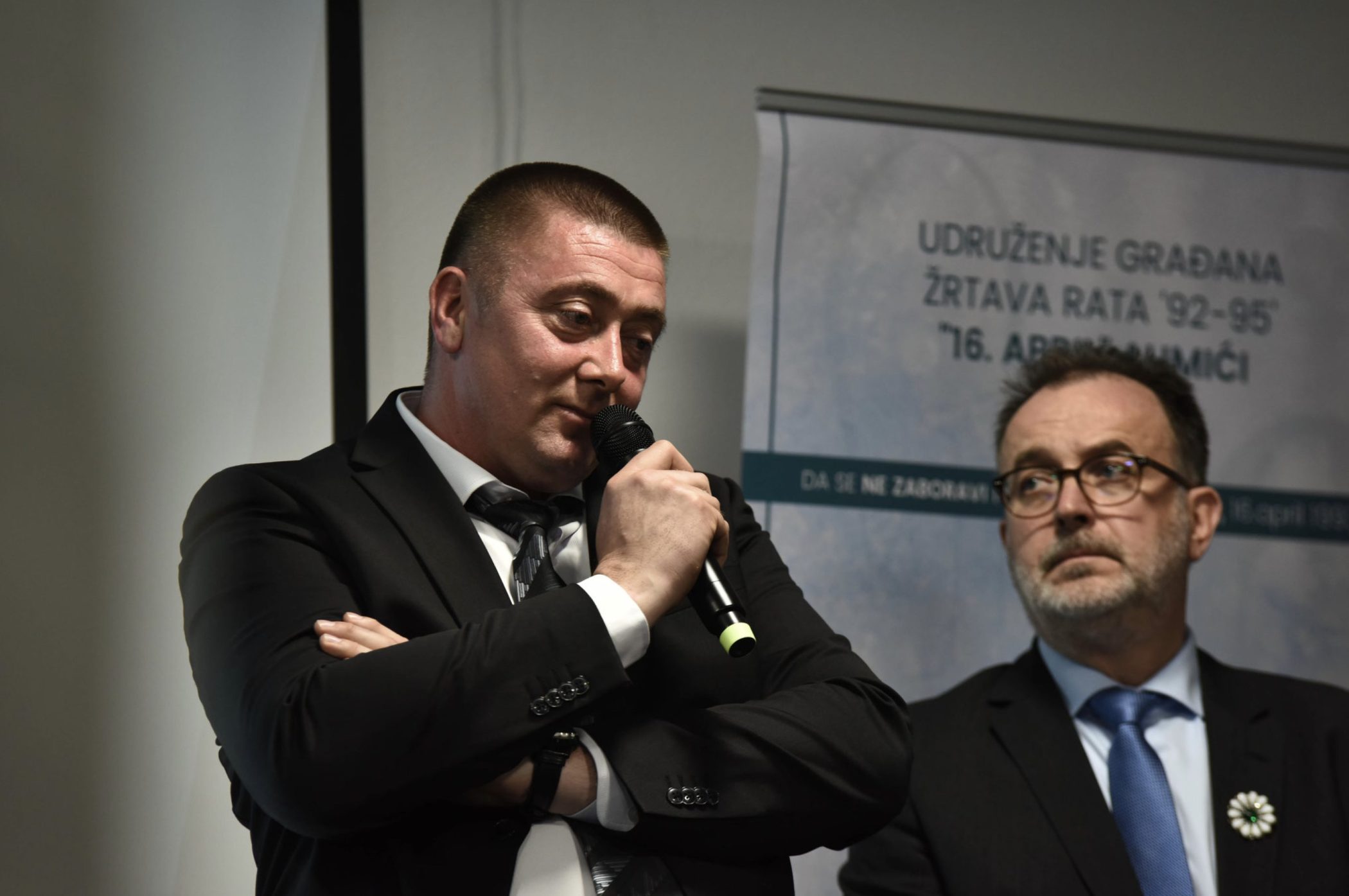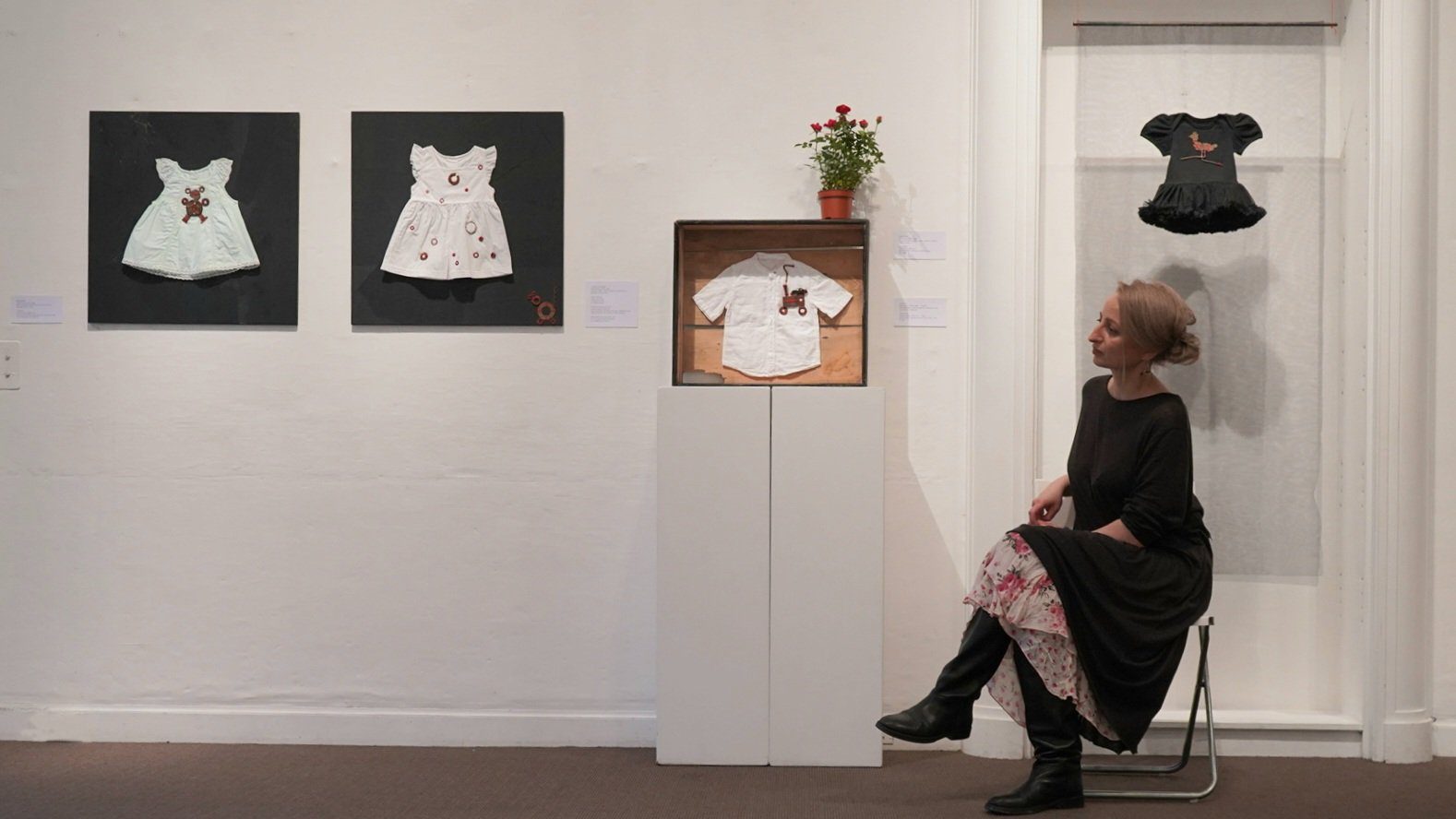This post is also available in: Bosnian
An international arrest warrant for Radovan Karadzic was issued by the UN-backed war crimes court in The Hague in 1996, but he was only put behind bars 12 years later when police managed to detain him in the Serbian capital Belgrade, where he was living undercover, disguised as a New Age mystic.
Next week the initial verdict in his trial will finally be announced, but from 1996 until 2008, he remained free – even though he was being hunted by various foreign intelligence services and by the Serbian and Bosnian authorities, while the US was offering a reward of almost $5 million for information leading to his whereabouts.
The details of the manhunt for the former Bosnian Serb president were fully revealed in the recently-published book The Butcher’s Trail, written by British journalist Julian Borger, the world affairs editor of The Guardian.
Based on more than 200 interviews with those directly involved, including state officials, intelligence officers and court employees, Borger managed to unravel the tangled story of the arrests of the most wanted men of their era in Europe – not just Karadzic, but also others who were indicted as suspected war criminals by the International Criminal Tribunal for the Former Yugoslavia, ICTY.
In the chapter entitled ‘Radovan Karadzic: The Shaman in the Madhouse’, Borger details how “the former psychiatrist and poet who had brought death camps, mass executions, and genocide back to the heart of a continent” managed to fool the forces on the ground and evade capture for so long.
Borger writes how the pursuit of Karadzic was marked by “false starts, blunders, betrayals, and near misses”.
There were failed negotiations over a possible surrender, he says, then “a series of would-be American ambushes that the fugitive always managed to avoid, either by blind luck, tip-offs, or a highly sensitive nose for danger”.
In an interview with BIRN, Borger said that constant interplay of justice and politics prevented Karadzic from being brought to court sooner, despite the fact that he was living in the open for years while an international warrant for his arrest was active.
No political will to arrest
Karadzic was initially indicted in 1995, the year that marked the end of Bosnian war with the signing of Dayton Agreement, which was considered at the time by the international community to be one of its biggest achievements in post-Cold War politics.
But despite the issuing of the arrest warrant and the presence of international forces on the ground in Bosnia, Karadzic and his entourage were driving around the de facto Bosnian Serb capital Pale for years before there a consensus was reached that he should be arrested.
According to Borger, bad timing was one of the key reasons why, by 2008, Radovan Karadzic was Europe’s most wanted man and its greatest embarrassment.
“The best time to get the top guys would be immediately after Dayton when they were defensive and vulnerable, but there was no political will then,” Borger told BIRN.
“When the political will arrived in the last years of the 20th century, it was no longer feasible. In case of Mladic, he fled into Serbia and by the end of the century so had Karadzic, which made them much less reachable. At the end they needed to wait for the political change to happen in Serbia to arrest them,” he said.
The UN had already set up the ICTY in The Hague in 1993 in anticipation of trying suspects like Karadzic, but some of its international backers were initially only supporting it rhetorically, Borger claims.
Their priority was trying to secure the long-awaited peace among the country’s three ethnicities – Serbs, Bosniaks and Croats.
“There was a great deal of hypocrisy in the original creation of the war crimes tribunal as some of the powers, Britain and France in particular, didn’t have the intention to allow it to function properly,” he said.
“Beneath the great announcements accompanying its creation was hypocrisy and there was also hypocrisy in the manhunt,” he adds.
Years passed before support on paper for the ICTY was turned into genuine backing in the manhunt for the 161 fugitives on the court’s most-wanted list.
“The realisation came for different people in different times. For some people it was immediately evident that you have to deliver on international law in order to safeguard the peace, but the military commanders that came with international forces saw peace and justice as alternatives and substitutes for each other,” Borger said.
“And it took them a year or so to release the Dayton peace process was not working as long as these guys are still around and in charge, they were stopping the refugees returning and they were stopping Dayton every time they could,” he added.
Safe haven in Serbia
But at the same time as international community, particularly Bill Clinton’s administration in the US, realised in the late 1990s that Karadzic and his military chief Ratko Mladic should be top arrest priorities, both men got the message that Bosnia was becoming risky territory for them and that they should look for a safer haven.
They found that haven right across River Drina, in Serbia, which many Bosnian Serbs, then as now, consider their motherland. And so it proved to be: the nationalists controlling the police and state security apparatus made Serbia safe for them, ignoring the demands from the international community to put them behind bars.
According to Borger, the arrest of Karadzic came only when the political landscape in Serbia changed and when pro-European President Boris Tadic took over the Serbian Security Information Agency, BIA, from his predecessor Vojislav Kostunica.
Borger said that Kostunica was “a nationalist opposed in principle to cooperation with the Hague Tribunal, particularly when it came to handing over Serb leaders”.
“Kostunica put in place in the BIA his man Rade Bulatovic, who was not in a hurry to catch top guys like Karadzic and Mladic. It was only few days after he was replaced that Karadzic was picked up, which was a clear sign that leadership in the intelligence agency mattered,” Borger explained.
“Beneath him in the agency there were people who were doing their job and it was a group of BIA guys who found Karadzic on a basis of the phone call made by his brother Luka,” he added.
The phone call led the BIA officers to a self-styled spiritual healer called Dragan David Dabic, who looked to them a lot like Karadzic.
‘Dabic’ had been living in the New Belgrade neighborhood, posing as what Borger describes as “a New Age mystic, offering spiritual cures for diseases and maladies”. He led an apparently open life and had even appeared in newspapers and on television, and it would have remained that way if he hadn’t made a phone call to Luka Karadzic.
“Dabic seemed an unlikely acquaintance for the hard-drinking, splenetic Luka Karadzic, who had hitherto shown little interest in healthy alternative lifestyles. So the BIA officers dug a little deeper, and the more they looked into the life of the white-haired shaman, the stranger he appeared,” wrote Borger.
If you cut off his topknot and shaved his beard, Dabic would be Karadzic, the BIA officers suspected.
After several security checks, they found that another Dragan David Dabic with the same personal details already existed, and so they put in hours of surveillance to make 100 per cent sure that their suspicion was correct – Dabic really was Karadzic.
But they decided not to take their suspicions to BIA chief Rade Bulatovic, who they believed might be opposed to arresting Karadzic, but to an aide of President Tadic, who wanted the job done in order to make progress towards EU accession.
They also only revealed their findings to Tadic’s office when they were sure they would be protected from a potential purge in the BIA if the arrest was ordered.
Tadic managed to reshuffle the leadership of the BIA, and few days afterwards, in July 2008, Karadzic was arrested while travelling on public transport in Belgrade. Despite street protests, he was soon transferred to The Hague, where he pleaded not guilty to all charged.
An end to impunity?
Karadzic’s initial verdict will be handed down on March 24 after the largest-ever case to be heard before the ICTY, which involved more than 5oo witnesses over the course of eight years.
“We are waiting to see the verdict, but the trial was comprehensive and substantial. There was a lot of hypocrisy in the manhunt for him but the trial managed to stay focused on the actual mass killings and the immediate perpetrators,” Borger said.
Despite criticism of the work of the ICTY over the years, Borger believes there are some positive aspects to its legacy.
“If you ask people around the region what they think about the ICTY, each group will have a reason to complain either because of acquittals or time that it has taken to deliver justice, and also because justice by its nature for such huge crimes can never been completed and it can never measure the scale of the crime so there are some grounds to criticise the court or be unsatisfied with the court,” he said.
“But I think if you look at its achievements, all 161 people indicted were brought to trial or faced justice one way or another, and there were perpetrators of the main warrying parties there on trial and it was very comprehensive,” he added.
The ICTY’s archives will be very important in providing proof to counteract those who would deny or play down the war crimes of the 1990s. But its major achievement was showing that senior political and military figures cannot escape justice, Borger suggested.
“The ICTY was a unique court that in broader terms ended the impunity of state and army leaders for the mass crimes they committed,” he said.
‘The Butcher’s Trail: How the Search for Balkan War Criminals Became the World’s Most Successful Manhunt’ by Julian Borger is published by Other Press.



